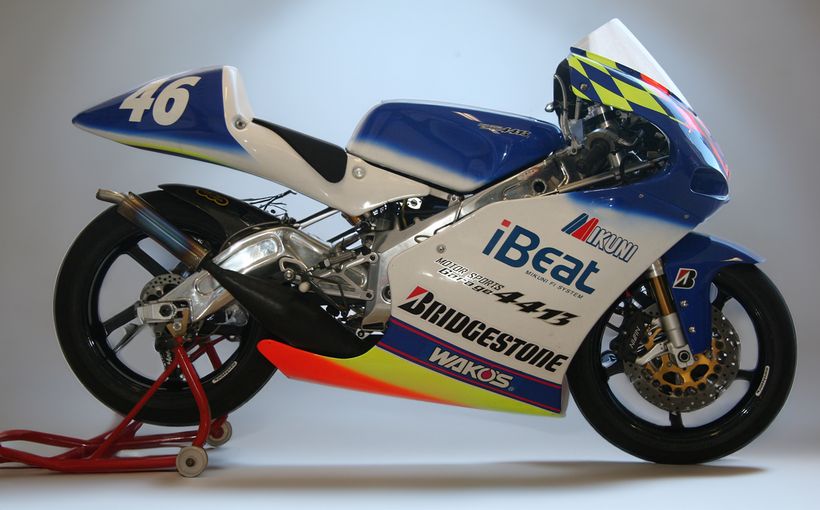1999 Yamaha YZF-R1: Future Collectable

Words by Jeff Ware/Mick Withers Photography by Dave Earp
WHERE IT ALL BEGAN…
Introduced in 1998, the Yamaha YZF-R1 was a significant bike in the litre-class arms race that was going on between the Japanese Big Four. On release, the advanced handling capabilities of the YZF-R1 took the class lead.

Before Honda released the Fireblade, the basic principle of performance motorcycles was that as engine capacity increased, so did the bike’s physical size and the length of its wheelbase. Basically, big motorcycles in the litre class were either tourers or cruisers. Motorcycle buyers wanted the capabilities of a race bike in a road bike package.
Honda engineers created the Fireblade by taking the chassis from a 600 and filling it with a 900 that was really just an over-bored 750. As quick as Honda could assemble their production-line spare parts special, they sold. With sales rocketing along, development stumbled at Honda.

The 1998 Yamaha R1 was the first production motorcycle built by any manufacturer to mate an inline-four-cylinder litre-capacity engine to a 600-sized chassis.
Yamaha saw the opportunity in developing their competitor model, using their unique copyrighted Deltabox chassis technology to create improved agility. To increase the agility, Yamaha redesigned the Genesis engine. In traditional inline-four-cylinder motorcycle engines the crankshaft, gearbox input and output shafts were parallel in a flat plane; in the R1 the shafts formed a triangle. This made the engine very short, allowing the wheelbase to be shortened, resulting in fast turning handling and an optimised centre of gravity.

For 1999, few changes were required, apart from paint and graphics, a redesigned gear change linkage and the gear change shaft length was increased for better gear shifting. Fuel tank reserve capacity was reduced from 5.5 to 4.0 litres, with the total fuel tank capacity unchanged at 18 litres. A second worldwide recall to change a coolant hose clamp under the fuel tank affected the 1998 and early-1999 models.

Contemporary tests of the 1998 YZF-R1 resulted in 0 to 100km/h of 2.96 seconds and 0 to 160km/h in just 5.93 seconds. Drag strip testing gave an ET of 10.19 seconds at 211.47km/h (131.4mph). Overall top speed touched 270km/h. Braking performance gave a 100km/h to stop distance of 34.7metres.

The 1999 model lost a bit of the edge with 0 to 100km/h taking 3.0 seconds and the quarter mile 10.31 seconds but at a faster 224.58km/h (139.55mph).
“I always wanted one from when they first came out.” Says Shane, owner of this 1999 model. Being in the right place at the right time is also a common theme, “An older guy owned it from new and wanted to buy a more wrist-friendly bike but was offered almost nothing as a trade-in,” explained Shane. “I was lucky to be the first to see the ad online.”
That was in 2005 and Peter (the then 60-year-old original owner) had kept it like new. After handing over $7000, Shane took possession of the bike he’d spent three months searching for.

External appearances would have you expecting a fire-breathing monster but the engine in this ’99 YZF-R1 is stock. A common fault with the early YZF-R1s is second gear. Being well aware of that, Shane entrusted the engine to Harley at RB Racing.

He went through it with a fine-toothed comb and put everything back to stock internally. The carbs were fitted with a Stage 1 jet kit and inhale their oxygen through a K&N airfilter in the standard airbox. Taking the exhaust gases away is a set of stock headers with a Delkevic carbon-fibre slip-on muffler toning down the note.

A custom top triple-tree gives a subtle hint that the front-end is not quite stock. Internally, everything came out of boxes marked Ohlins and was supplied and fitted by Zeno from Zenodamper. The same bloke was also responsible for the Ohlins rear shock that controls the movement of the standard swingarm.
The rotors are Brembo full floaters paired with a set of Sumitomo monoblock calipers from a 2002 R1. A Brembo RCS master cylinder with folding lever and clear reservoir hose provide pressure to the current front brake package. BST was the manufacturer of the carbon wheels and they are encased in Michelin Pilot Pure tyres.
The 1998 and 1999 Yamaha R1’s are getting hard to find. Grab one while you can!

Protect your motorbike. Call Shannons Insurance on 13 46 46 to get a quote today.








